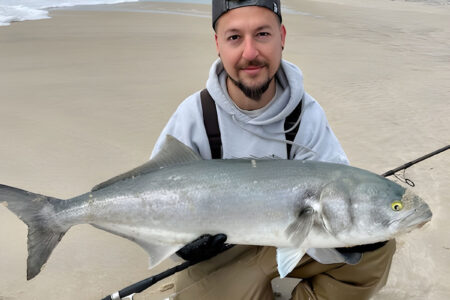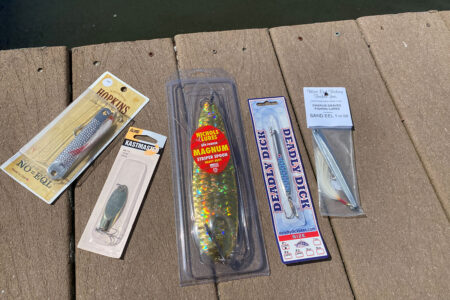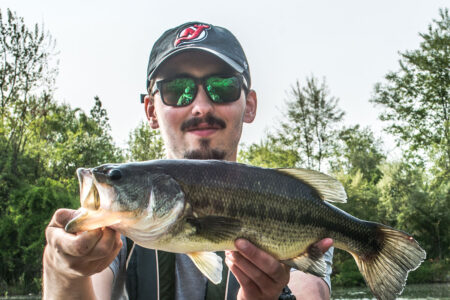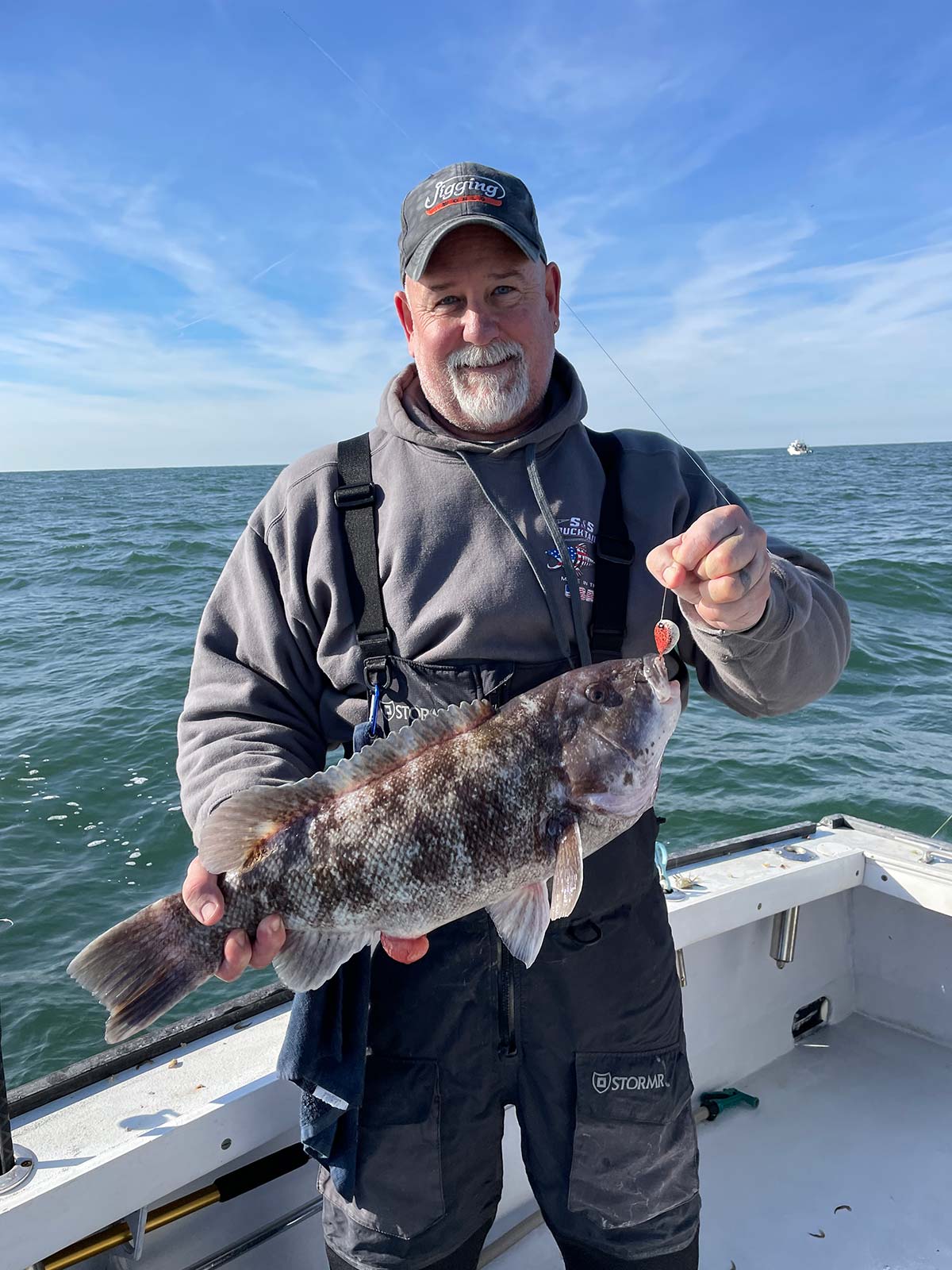
In the modern blackfish era, there’s the way it once was, and how it is today.
Many of us are obsessed with blackfish that began many years ago; and my, have things changed!
These exact words are what I heard on the answering machine in 1987 when I called Gary Fagan’s head boat, Big Mohawk III in Belmar. “TogOMania is alive and well at the Jersey Shore,” the captain’s voice said.
We had been reading reports of excellent bottom fishing and wanted to get in on the action. The back bay and bridge fishing we were doing from our boats was difficult and not as productive as we thought, so we needed to branch out.
The first time we fished this boat was a Sunday. We arrived plenty early, but the boat was railed! My friend Mike Krowicki and I found a spot midship on the starboard side. We watched the captain drop one anchor, then another as he settled the 100-foot boat with precision on a section off the Shrewsbury Rocks known as The Rattlesnake. As soon as we heard lines in, there were blackfish flying into the boat; everybody was lifting fish over the side and into their coolers.
Well, almost everybody. We were using store bought rigs and sinkers that were too light for the job. We swung at every tap. We watched in awe, but we were hooked!
Sure, we caught a few fish aboard the Big Mohawk III that day 35 years ago, but the size and the number of fish caught by those sharpies was amazing! Big, bull-headed males with white bellies and spots on their chin. These pool winners were 6- to 8-pounders, but they were the largest blackfish that we had ever seen! These sharpies used rods that they had made for this task. Some used sidewinders that looked old when I was young. They snelled their own hooks and tied their own rigs. These guys were regulars at this game, and they were good. Really good! We had much to learn.
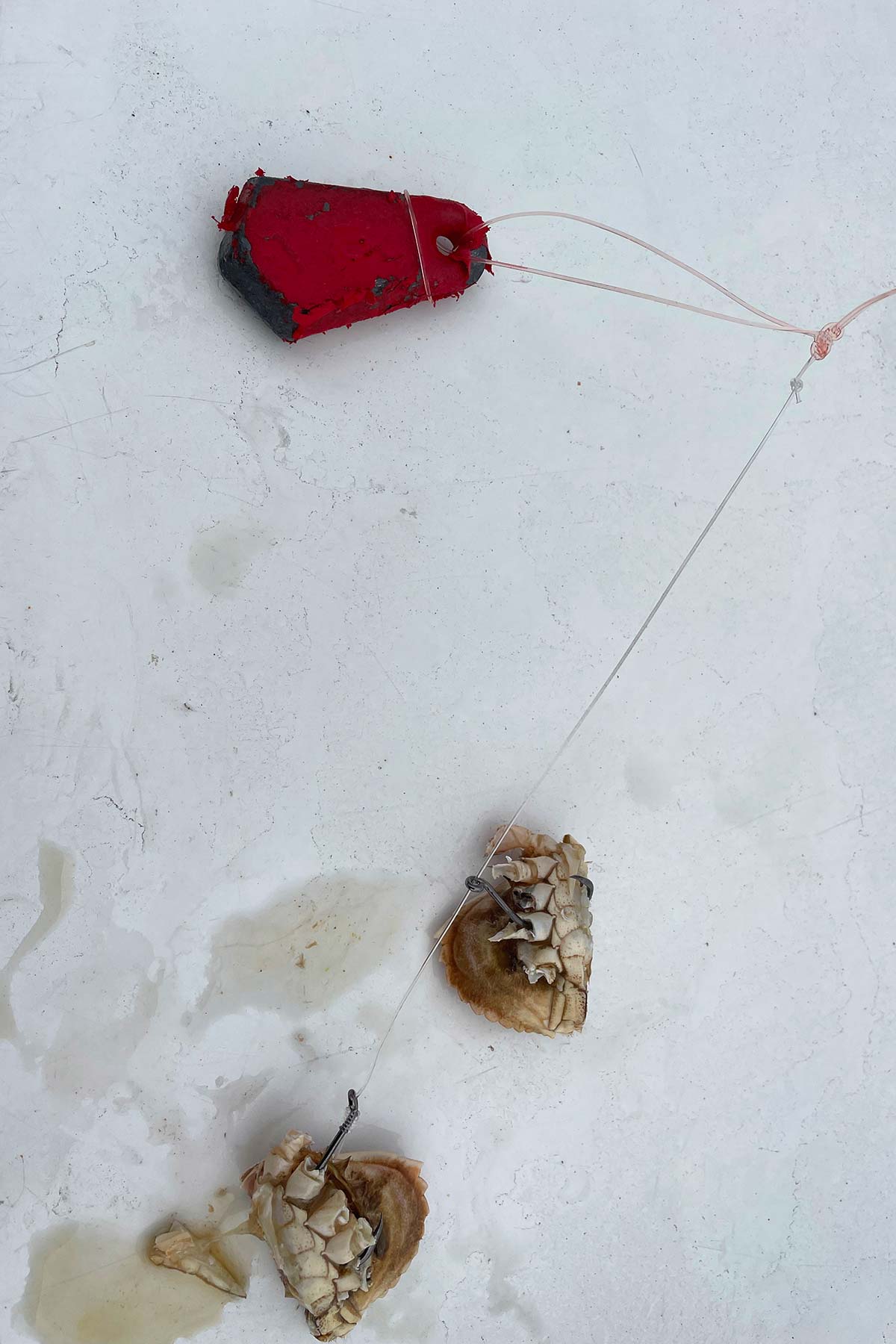 |
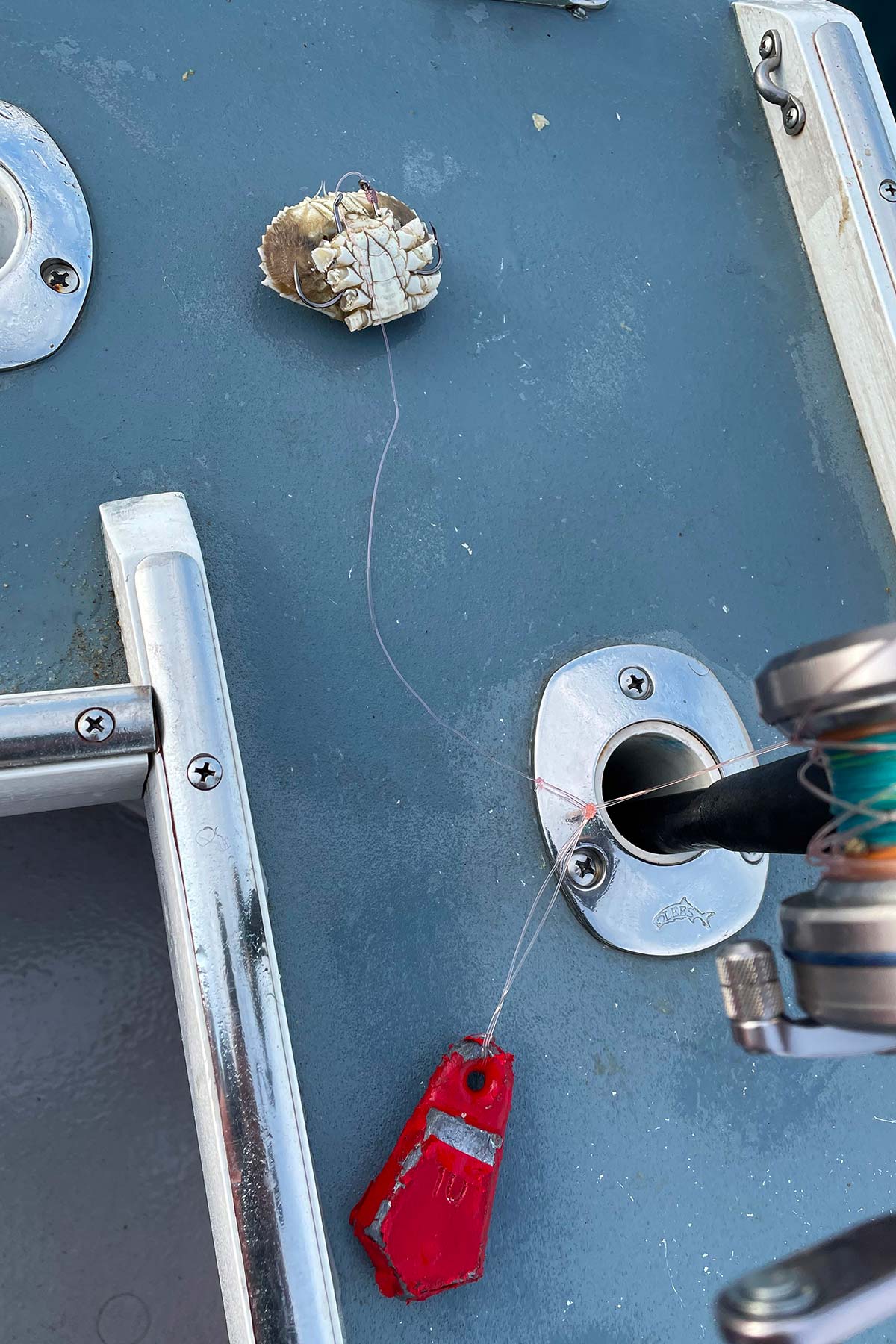 |
| The slider rig is great for two halves of a crab, one half on each hook; or using both of the “sweetheart rig” hooks when using a whole medium-sized crab as bait. | |
Listen & Learn
I began fishing the boat on Wednesdays which is where and when I learned so much from these old salts. Of course, much has changed in the past few decades. Boats, electronics, and gear have all evolved so much. You can watch a YouTube video and buy a spot lock for your boat and you’re all set; or at least, so you think!
These days we share non-vetted information almost too easily via the internet, albeit these tips from self-proclaimed experts may actually be from an armchair fisherman whose screen time substitutes for rail time. Their video skills normally outweigh their fishing skills. Yet here you are watching them catching tiny fish on their twice a year head boat trip. But we are toggers; we’re not begging for likes, and we don’t need to add an extra twist to a knot then rename it after ourselves to boost our views. What we seek is what we earn at the rail. Respect among our peers. Oh, we have friends, and we even share info when asked. Grinding it out looking for bites is what makes a great togger. To catch blackfish, especially big blackfish, that takes a combination of genuine skill, luck, coupled with an undeniable work ethic. The harder I work, the luckier I get.
Catching a ride with an excellent blackfish captain will give you a decided advantage, but this is easier said than done. Jumping on one of the best charter boats in the region sometimes requires securing these dates a year or more in advance. Many boats will be in very high demand this month in the New Jersey, Delaware region, and for good reason! Some of the best tautog captains are exceptionally skilled and hardworking; that means taking your trip seriously.
If you can secure a trip with them next year, any day of the week, take it! You will fill a boat with people who are begging to get on these boats; but understand that this is your firm commitment. The captain will call you around dinner time the night before your trip and tell you the time the boat leaves, or he will cancel. This is not an open discussion. If he cancels, you don’t pay. If you cancel, that’s a different story.
Most days and weekends will be taken, so be flexible. Having the cash has nothing to do with getting on a particular boat. If I charter a certain boat every Saturday and Sunday in December, then these are my trips every year, year after year until the captain or I change plans. The dates may change but the weekends are spoken for.
Head boats on the other may require much less of a commitment from you. You show up in the morning, jump on and pay your fare. If you are worried about the weather, you can change your head boat plans and roll over and stay in bed. Most new toggers start out on a head boat because of these reasons. The comradery can be great as you can learn so much from those around you. Keep in mind that most boats have a few regular sharpies; if you can check your ego, watch and you will learn much. The mate can show you how to rig properly and often will have the rigs and sinkers for you if needed.
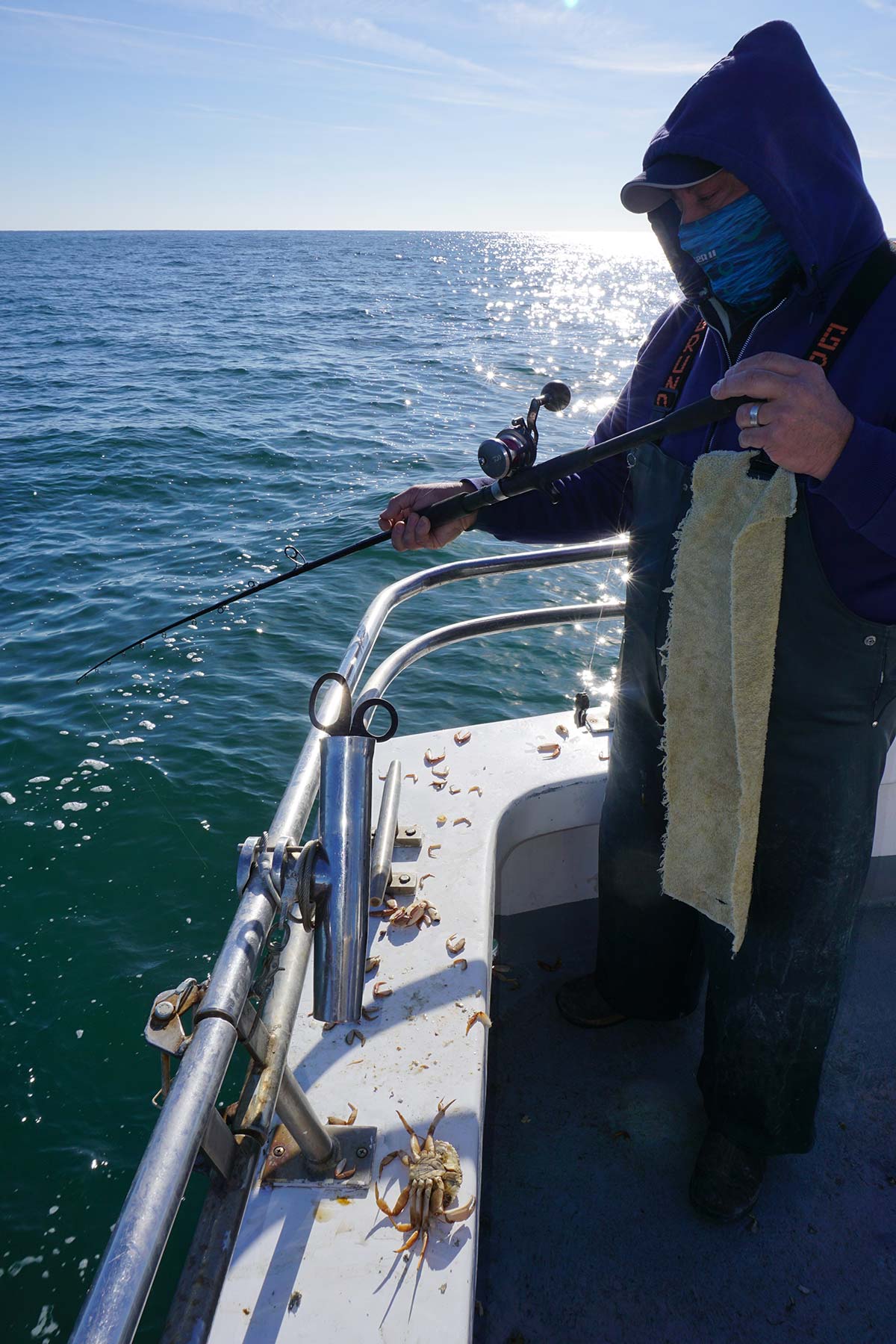
Bait & Tackle
I tie my own slider rigs and sweetheart my rigs. They are 5/0 Owner Cutting point Octopus hooks tied on 50-pound test Tsunami fluorocarbon leader material. After November I bump that up to 60-pound test. The slider rig is great for two halves of a crab, one half on each hook. The sweetheart rig is perfect when using a whole medium sized crab as bait. The flipped hook will allow the leader to lie straight on the bait minimizing the twisting of the bait as it falls to the reef or wreck below. Both rigs are very easy to tie and are big fish proven. A single snelled hook makes for a neat and clean presentation that’s easy for a picky fish to eat. If the crabs are small, a single hook may fit the bait better. This is particularly effective when fishing waters with a lot of tide or current.
Green crabs and white crabs both have their days. Greens are preferred inshore and out to the reef sites before December or so. The colder the water temps, and the further offshore you push, the more the white leggers will get more action. When the current is very strong, keep your bait neatly trimmed to minimize twisting as your bait falls.
Most days you will get more bites if you can fish a “slack line”. As your sinker is on the bottom, do not lift it as the boat rises and falls on the swell. Instead, take up and give slack by raising and lowering your rod tip. This will prevent your sinker from bouncing up and down sending all blackfish in the area away from your bait. When you feel a bite, get in position to set the hook. When a silly person thinks he is being coy, and he says “Ya’ gotta set the hook just before they bite. They’re quick ya’ know!” just consider the source and move along. This person may not take their togging very seriously.
How you fish for tog is a matter of preference and conditions. Conventional gear with 50-pound braid and a slider rig is my standard on most boats in New Jersey. I prefer a rod closer to 8 feet in length to swing and move a big fish while setting the hook. Try a few different rods in your hands before you pick out what you want. Perfect balance is needed to comfortably fish a slack line all day long. An 8-ounce weight on the bottom end and you’re in business! Bait up and drop it to the bottom.
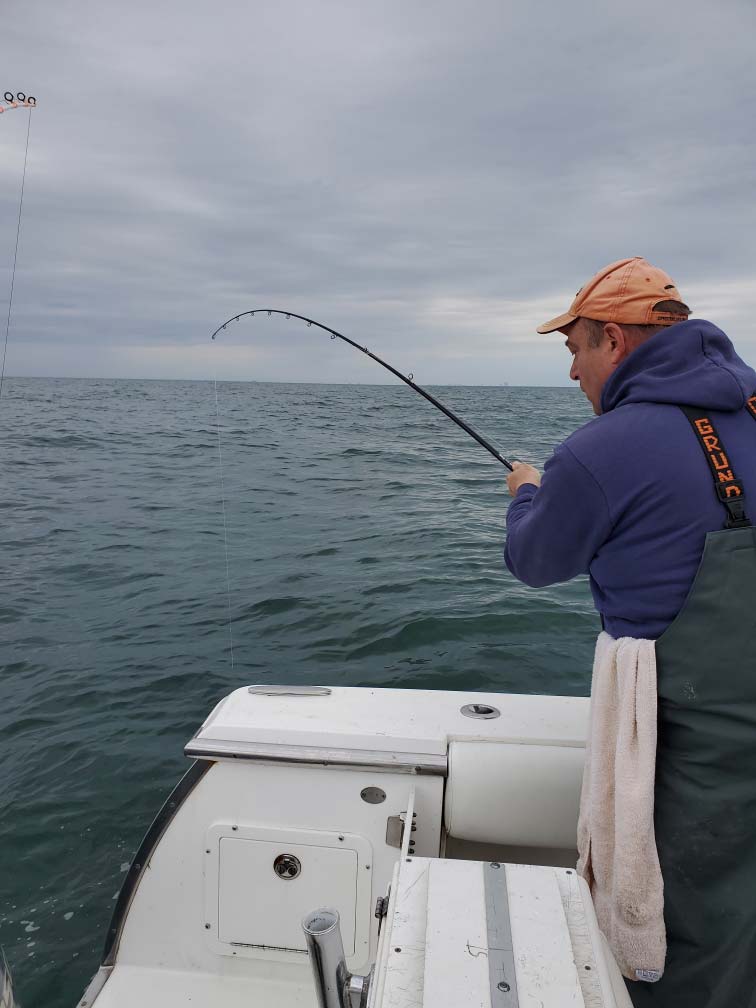
Don’t get all excited and start swinging on every peck. A small scratch, another scratch, maybe another, then you get a tug tug – now hit him! Set the hook while getting your rod tip up as high as you can while reeling as quickly as you can until the fish stops you. The reason that I say this is because there is no accurate way for anyone to know if it is a small fish or a large fish by the way it pecks your bait. When you swing, you will know! But if you don’t swing high and hard, he may swim back into the wreck and then you’re stuck. So, practice hooking and fighting these fish correctly on every single bite.
When you set up on a nice one and your rod bends deeper than normal you will be very happy with your fish fighting technique as you will be landing the Jumbos that the casual fishermen let get hung up. Never pump the rod. No need to go super-fast, just be smooth on the retrieve.
| NOW SAILING! |
| In New Jersey, the bag limit for tautog increases to five fish on November 16 which runs through December 31. From January 1 through February 28, the bag limit is four fish. The size limit in New Jersey is 15 inches.
In Delaware, there’s a 16-inch minimum size for blackfish with a four fish bag that began on July 1 and runs through December 31. For more information on head boats and charters for tautog this month, make sure to look in this month’s Report Section for a list of sailing schedules for licensed captains in the New Jersey, Delaware Bay region. |
Toggers are a funny lot. Most guys who have been at it for a while at least know and respect each other. At the same time, their experience will shine through when you look at their rigging, rods, reels, and even down to their boots. These guys are well seasoned. Just because they do not mount multiple GoPro cameras to document their day doesn’t mean they are not relevant. Perhaps if the cameras were pointed at this sage oldster, they would capture him working for the bite. You would see him get that whomp, whomp, whomp bite that has him swing like it’s his job. His rod bent in a glorious display that has the entire boat watching as he calmly glides his jumbo toward the waiting net.
The pool winner’s fish hits the deck with a resounding thud, yet he often doesn’t say a word. This is the guy; watch and learn.
